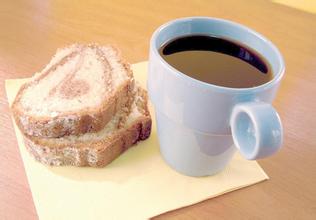Flavor Description of Colombia Coffee Bean Grind Scale Variety Treatment Taste Introduction
Flavor description of Colombian coffee beans introduction to the taste of grinding scale variety treatment method
The main varieties of Colombian coffee are small grains of coffee. Plants are small trees or large shrubs, 5-8 m tall, usually much branched at base; old branches gray-white, nodes dilated, young branches glabrous, compressed. Leaves thinly leathery, ovate-lanceolate or lanceolate, 6-14 cm long and 3.5-5 cm wide, apex long acuminate, acuminate part 10-15 mm long, base cuneate or slightly obtuse, rarely rounded, entire or shallowly wavy, both surfaces glabrous, lower vein axils with or without small pores; midrib raised on both surfaces of leaf, 7-13 on each side of lateral veins; petiole 8-15 mm long Stipules broadly triangular, arising from the tip of the upper part of the young branch conical or awn tip, the tip of the old branch is often protruding tip, 3-6 mm long. Cymes several clustered in leaf axils, each with 2-5 flowers, without a peduncle or with a very short peduncle; flowers fragrant, with pedicels 0.5-1 mm long; bracts more or less connate at base.
Huila is located in southern Colombia, one of the well-known specialty coffee producing areas, with an altitude of about 1200 to 2020 meters, a planting area of more than 1.3 million hectares and an average temperature of 17 to 23 °C. Because of its outstanding flavor and aroma, it has become a world-famous special coffee. Medium-high acidity and moderate mellowness, charming sweetness and lemon wine acid, balanced and pure aftertaste, it is often selected by major coffee competitions in recent years.
The eastern mountain range has rugged terrain, steep slopes and an altitude of 4000 meters. The climate is affected by different elevations, which makes it show a variety of meteorological zones, resulting in a rich aroma of coffee and moderate acidity. Smooth and consistent with tobacco flavor
The first part is the triangle of the background, which symbolizes the Andes and implies that most of the Arabica coffee growing areas in Colombian coffee belong to high-altitude mountains. It is well known that the main coffee producing areas in Colombia are located in three mountains arranged with the word "Sichuan", all of which are part of the Andes. According to the geographical environment and climate, the characteristics and flavor of coffee in different regions are the same.
The second part is the mule. Please note that it is not a donkey! In Colombia coffee farmers actually use mules to carry coffee from the mountains. Because the mountain road in the coffee growing area of Colombia is very rugged, coffee farmers mostly use mules as a means of transportation. because of such unique geographical conditions, even today, even with the development of transportation and science and technology, they are unable to transport coffee beans from more than 1000 meters above sea level. and rugged mountain roads transport coffee beans, so the way of carrying coffee by mules continues to this day.

Important Notice :
前街咖啡 FrontStreet Coffee has moved to new addredd:
FrontStreet Coffee Address: 315,Donghua East Road,GuangZhou
Tel:020 38364473
- Prev

Brazil mojiana coffee beans planting base map characteristics grinding scale processing method variety introduction
Coffee was first introduced to Brazil in the early 18th century. In 1727, the Brazilian government sent a handsome army officer to secretly bring coffee seeds back to Brazil from French Guiana on the grounds of mediating border disputes. It is said that the wife of the governor of French Guiana was deeply fascinated by this officer. Therefore, in 1727, the Brazilian government sent a handsome army officer to secretly bring coffee seeds back to Brazil.
- Next

Uganda Coffee Bean Characteristics Flavor Description Taste Treatment Variety Region Grinding Scale Introduction
After World War I, Uganda's long-standing discontent with colonial rule finally erupted. In 1918 there was a nationwide general strike and rural unrest. In 1919 Buganda again launched a democratic movement under the Bataka Party and Uganda African Farmers Union. In 1921, Uganda's first
Related
- Detailed explanation of Jadeite planting Land in Panamanian Jadeite Manor introduction to the grading system of Jadeite competitive bidding, Red bid, Green bid and Rose Summer
- Story of Coffee planting in Brenka region of Costa Rica Stonehenge Manor anaerobic heavy honey treatment of flavor mouth
- What's on the barrel of Blue Mountain Coffee beans?
- Can American coffee also pull flowers? How to use hot American style to pull out a good-looking pattern?
- Can you make a cold extract with coffee beans? What is the right proportion for cold-extracted coffee formula?
- Indonesian PWN Gold Mandrine Coffee Origin Features Flavor How to Chong? Mandolin coffee is American.
- A brief introduction to the flavor characteristics of Brazilian yellow bourbon coffee beans
- What is the effect of different water quality on the flavor of cold-extracted coffee? What kind of water is best for brewing coffee?
- Why do you think of Rose Summer whenever you mention Panamanian coffee?
- Introduction to the characteristics of authentic blue mountain coffee bean producing areas? What is the CIB Coffee Authority in Jamaica?

